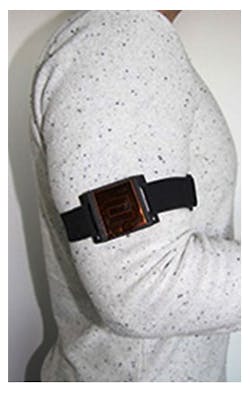A pacemaker is a device that is implanted in the abdomen or chest area to control abnormal heart rhythms. It utilizes electrical impulses to help the heart muscle maintain a proper rhythm and heart rate. Most pacemakers are usually powered with a primary battery that requires a replacement when it is depleted. Implant replacements due to battery depletion can account for about 25% of implantations of cardiac pacemakers.
Besides the cost of these replacements, there is always a risk of complications and added stress for the patient. Several approaches have been used to replace the primary battery with one that is rechargeable.
Over the years, various power sources have been used for pacemakers—among them a radioactive material power source using plutonium-238. Another approach involved inductive transfer in a manner similar to charging a smartphone battery. Several other techniques have utilized the movement of the heart to harvest energy for powering the pacemaker. These approaches all had problems that limited their commercial use. In addition, some of these solutions are affected by cell phone signals or an MRI procedure.
A new approach proposed by Swiss researchers involves the use of solar cells placed under the skin to power an electronic implant. The Swiss researchers found that a 3.6 square centimeter solar cell is all that is needed to generate enough power during winter and summer to power a typical pacemaker.
According to lead author Lukas Bereuter of Bern University Hospital and the University of Bern in Switzerland, wearing power-generating solar cells under the skin will one day save patients the discomfort of having to continuously undergo procedures to change the batteries of such life-saving devices. The findings are set out in Springer’s journal Annals of Biomedical Engineering.
“As a promising alternative energy source, ambient sunlight could be used,” the article explains. “Sunlight is a reliable and omnipresent energy source and a fraction of the ambient light penetrates the human skin. In particular, near-infrared light features good skin penetration. Thus, an implant is irradiated, yet implanted under the skin and the penetrating light could be converted into electrical energy by solar cells.”
Various research groups have put forward prototypes of small electronic solar cells that can be carried under the skin and can be used to recharge medical devices. The solar cells convert the light from the sun that penetrates the skin surface into energy.
To investigate the real-life feasibility of such subcutaneously implanted solar cells to power electronic implants, Bereuter and his colleagues developed specially designed solar measurement devices (Fig.1) that can measure the output power being generated. The cells were only 3.6 square centimeters in size, making them small enough to be implanted if needed. For the test, each of the 10 devices was covered by optical filters to simulate how properties of the skin would influence how well the sun penetrates the skin. These were worn on the arm of 32 volunteers in Switzerland for one week during summer, autumn, and winter.
The solar measurement device block diagram shown in Fig. 2 employs a memory card to store the voltage/current values along with date and time. This device has a rechargeable battery that allows a continuous measurement for more than two weeks.
No matter what season, the tiny cells were always found to generate much more than the 5 to 10 microwatts of power that a typical cardiac pacemaker uses. The participant with the lowest power output still obtained 12 microwatts on average.
“The overall mean power obtained is enough to completely power for example a pacemaker or at least extend the lifespan of any other active implant,” notes Bereuter. “By using energy-harvesting devices such as solar cells to power an implant, device replacements may be avoided and the device size may be reduced dramatically.”
Bereuter surmises that the results of this study can be scaled up and applied to any other mobile, solar-powered application on humans. Aspects such as the catchment area of a solar cell, its efficiency, and the thickness of a patient’s skin must be considered.




